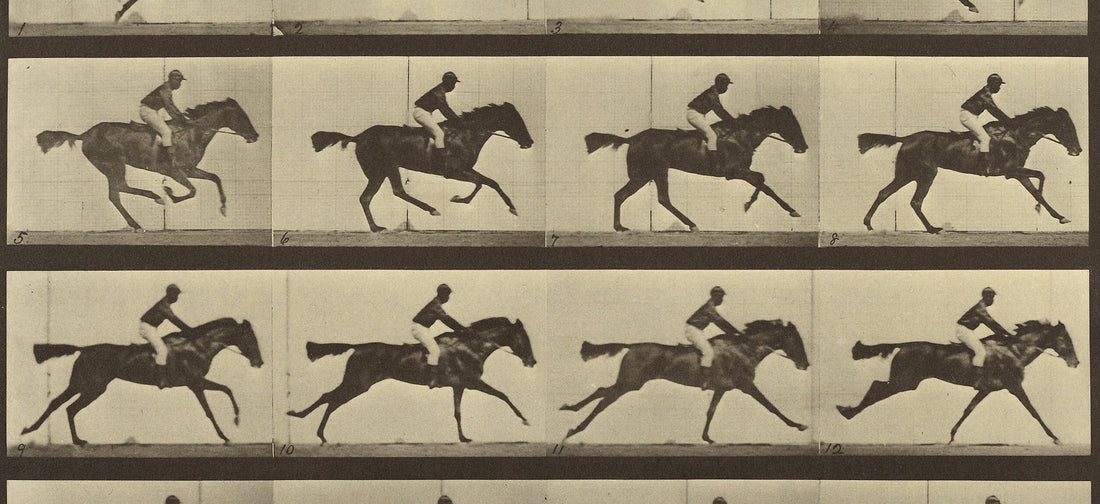In his fascinating new book The Short Story of Photography, author and critic Ian Haydn Smith has chosen 50 photographic images, all of which changed the world. Here he picks five of his favourites.
Writing any history, particularly one comprised of brief episodes, begins with the decision of what is essential and what not to include. Since Nicéphore Niépce took ‘View from the Window at Le Gras’ sometime in the mid-1820s, there have been an embarrassment of photographic riches.
The images that appear in ‘The Short Story of Photography’ are not a ‘best of’. The hope is that 190 years of technological and artistic development can be traced through these photographs, which have helped contribute to the cultural and social fabric of the medium. There is no doubt that countless other photographers’ work could have been included, from Alice Austen, Gordon Parks and Helen Levitt to Saul Leiter, Shirin Nesat and Candida Höffer. The hope is that this brief guide will act as a starting point for readers to further explore photography’s rich past.
However, there are personal favourites amongst the selection chosen for the book. In some cases, the photographs stand out because of their beauty, formal brilliance or their context. For others they represent an extraordinary body of work. But each image elicits a response when it is viewed.
Parade, Hoboken, New Jersey – Robert Frank, 1955

This photograph opens Frank’s book ‘The Americans’. The antithesis of Henri-Cartier Bresson’s Decisive Moment, ‘The Americans’ was the culmination of Frank’s two-year journey across the US and is cumulative in its effect. Each photograph is a fascinating snapshot of the country, but taken as a whole the book is a stark portrait of a world that stands in direct contrast to the image of America that was projected to the world. In this image, the face of the figure in the left window is hidden in shadow, while the figure on the right is obscured by an American flag. This ‘covering up’ is suggestive of lives unseen by the world; lives that Frank excavates through the book’s remaining 82 images. ‘The Americans’ was critically reviled upon its initial US publication in 1959. (It was first published in France the year before.) But it now stands as a landmark in photographic history.
Migrant Mother, Nipomo, California – Dorothea Lange, 1936

To choose one image from the thousands taken by the Farm Security Administration photographers working across the American heartland in the 1930s – a group that included Walker Evans, Jack Delano, Gordon Parks, Arthur Rothstein and John Vachon – would be a formidable, near-impossible task, were it not for the emotional power, formal brilliance and humanity of Dorothea Lange’s stunning portrait of one mother and her three children. (The existence of other photographs taken of the subjects by Lange are also a testimony to the importance of choosing the right image.) There is no doubt that Evans’ body of work from this period, as evinced in the images that accompany James Agee’s text for ‘Let Us Now Praise Famous Men’, the 1941 publication that grew out of a cancelled Fortune magazine assignment, remain arguably the strongest portrait of rural American life during the Depression. But few images possess the weight of Lange’s deceptively simple shot.
Self-Portrait (I Am in Training, Don’t Kiss Me) – Claude Cahun, 1927

A life lived as an artwork, Claude Cahun’s story, inseparable from that of her partner/collaborator Marcel Moore, is remarkable. Born Lucy Schwob, she met Suzanne Malherbe in her teens and the two entered Paris’ artistic circles in the 1920s, gravitating towards the Surrealists. It was during this period that they changed their names and took this self portrait of Cahun. Their work constantly challenged gender stereotypes and the role of women in society. More recently, as gender fluidity has increasingly taken centre stage in contemporary debates on identity, the profile of Cahun’s work has increased significantly. Some years after this photograph was taken, Cahun and Moore moved to Jersey, in the Channel Islands. They remained there during the German occupation and became the only significant resistance to the Nazis. Both were eventually found out and were sentenced to death, although the end of the war prevented the sentence being carried out. If the German authorities had discovered that the women were lovers, or that Cahun was a Jew, their punishment would have been swifter. As artists, Cahun and Moore were bold and provocative. As people they were extraordinary.
Baltic Sea, Rügen – Hiroshi Sugimoto, 1996

Like Andreas Gursky’s ‘Amazon’ (2016), Sugimoto’s vast seascape deserves to be seen on the largest scale. But whereas Gursky’s shot of a multinational’s warehouse is a loud cacophony of shapes and colours, Sugimoto’s image achieves a state of sublime reflection. An initial encounter with any image from this series, which began in 1985 and has continued up to the present, shows a two-tone portrait of sea and sky, but closer inspection reveals an image as detailed in its textures as a Rothko painting. Each photograph – Sugimoto has travelled the world with the project – gives equal space to a body of water and the sky above it. Some images are taken at night or in dense fog, with the line between water and air almost indiscernible. In others, sunlight alters tone. If undulating wave patterns dominate one image, in another there is the serenity of calm waters. In this shot of the Baltic, there is a hidden tumult that only adds to the sense of vastness that extends far beyond the limits of Sugimoto’s frame.
Mike, father and gun owner, with baby, Dallas, Texas – Zed Nelson, 1998

A father holds his child in one hand and a gun in the other. The barrel points towards the child’s head, but the man’s finger is not on the trigger. His expression is steely and the message he conveys is clear: I will not hesitate to use the gun to protect what I value most. But the position of the gun remains troubling. It’s a key image in Zed Nelson’s ‘Gun Nation’, documenting a journey across the US and detailing the country’s complex relationship with firearms. Nelson recently revisited many of the subjects in his 2000 book in a short documentary commissioned by the Guardian newspaper. It only highlights how relevant ‘Gun Nation’ remains. The most powerful images in the book are portraits like this, suggesting that guns are regarded less as an accessory and more as an integral part of so many people’s lives.

